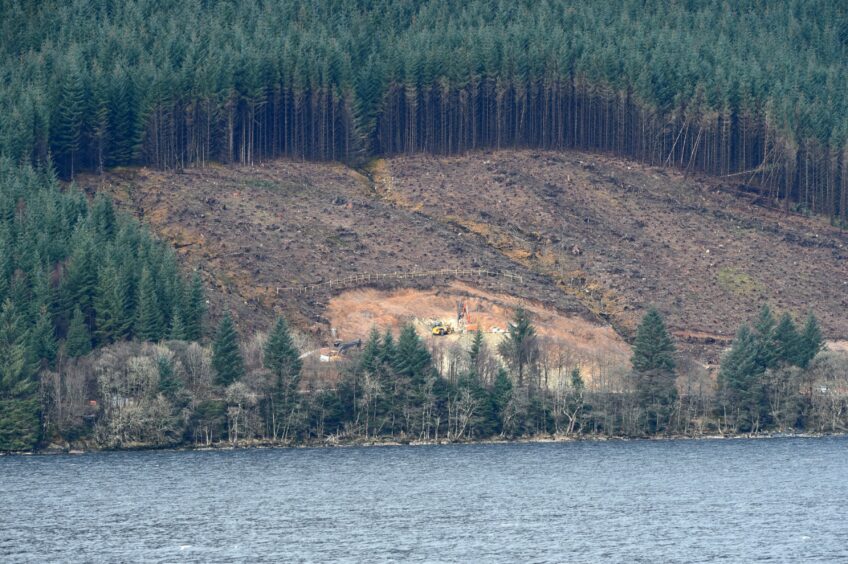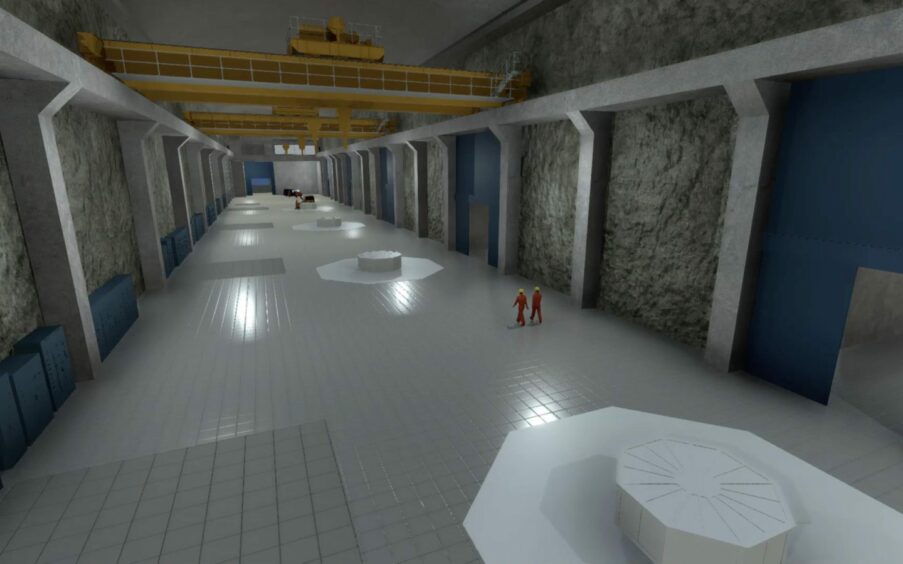Energy giant SSE has unveiled plans to invest £100 million in a £1.5 billion-plus pumped hydro storage scheme in Lochaber.
It is said to be the largest scheme of its kind in the UK in four decades.
The new facility, Coire Glas, is proposed for Loch Lochy, between Fort William and Inverness.
If approved, it is expected to require a capital investment of more than £1.5 billion to construct.
Planning consent granted in 2020
It would be the first pumped hydro storage scheme to be built in the UK for 40 years.
The Scottish Government provided planning consent for the project in 2020.
Scottish Net Zero and Energy Secretary Michael Matheson said: “Today’s announcement is a significant and important milestone on the journey towards delivering the Coire Glas project.
“If built, Coire Glas will more than double Britain’s long-duration electricity storage capacity – allowing the grid to more flexibly deploy renewable electricity.
“The Scottish Government has long been supportive of pumped hydro storage capacity, which we believe will play a key role in the energy transition and is a vital component of a more flexible, resilient and secure electricity supply.
UK government approval
SSE is waiting for a UK Government’s decision on how it will financially support long-term electricity storage, a commitment of last year’s British Energy Security Strategy.
The Perth-based firm said this could include the introduction of a “revenue stabilisation mechanism” in the form of a “cap and floor” scheme to support the capital investment.
The Scottish Government has long been supportive of pumped hydro storage capacity, which we believe will play a key role in the energy transition and is a vital component of a more flexible, resilient and secure electricity supply.”
Michael Matheson, net zero and energy secretary
Mr Matheson said: “It is critical the UK Government puts in place the appropriate market and regulatory arrangements to support the industry’s development as a matter of urgency.
“Only with a supportive policy environment can this sector realise its full potential.”
SSE plans to make a final investment decision on the project by 2024 subject to “positive development progress and the prevailing policy environment”.
Its initial plans would see the scheme built and commissioned by 2031.
What is Corie Glas?
Once complete, it is estimated the project will have the capacity for 30 gigawatt-hours of long-term storage.
SSE claims this will allow it to power three million homes in five minutes, delivering “non-stop” flexible power 24×7.
The scheme would take excess energy from the grid to pump water 1,640ft up a hill from Loch Lochy to a reservoir – equivalent to nearly 11,000 Olympic-sized swimming pools – where it would be stored before being released to power the grid when the wind cannot meet customer demand.
Coire Glas is expected to be one of the biggest engineering projects in the Scottish Highlands since the 1943 Hydro-Electric Development (Scotland) Act.
Moving forward
Around half of SSE’s £100 million investment is being allocated to pre-construction work on Coire Glas, including an exploratory tunnel to assess geological conditions at the site.
SSE finance director Gregor Alexander said: “Coire Glas will be one of the most ambitious energy infrastructure projects the UK has ever seen and is a key component of SSE’s commitment to helping lead Scotland and the UK’s energy transition.
“If delivered around the turn of the decade, Coire Glas could play a crucial role in getting the UK to net-zero.”
Whilst Coire Glas doesn’t need subsidy, it does require more certainty around its revenues.”
Gregor Alexander, finance director, SSE
Mr Alexander added: “Our ability to reach a positive final investment decision will clearly depend on the prevailing policy environment for long-duration electricity storage and long-term infrastructure projects more broadly.
“Whilst Coire Glas doesn’t need subsidy, it does require more certainty around its revenues and it is critically important the UK Government urgently confirms its intention on exactly how they will help facilitate the deployment of such projects.”






Conversation